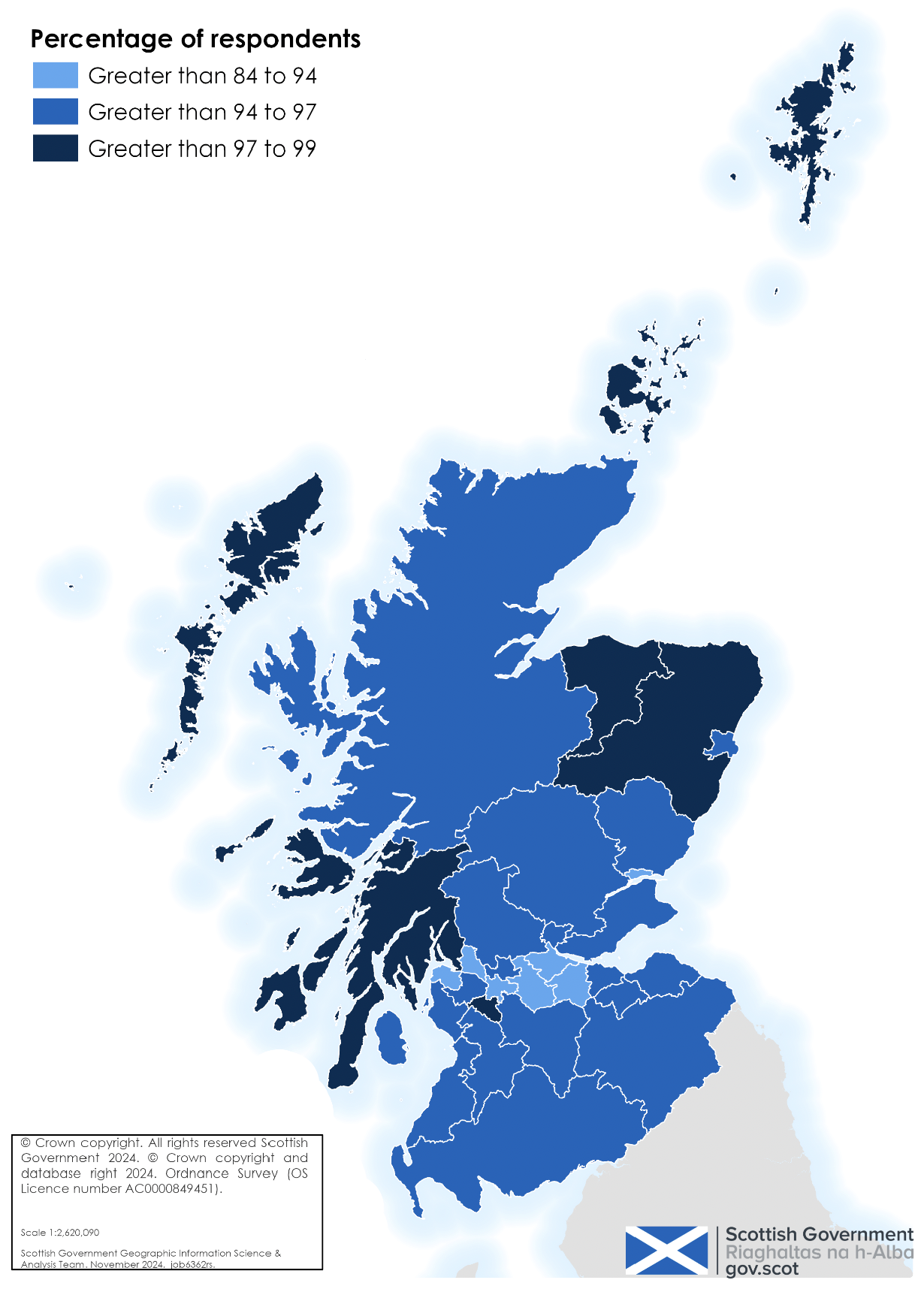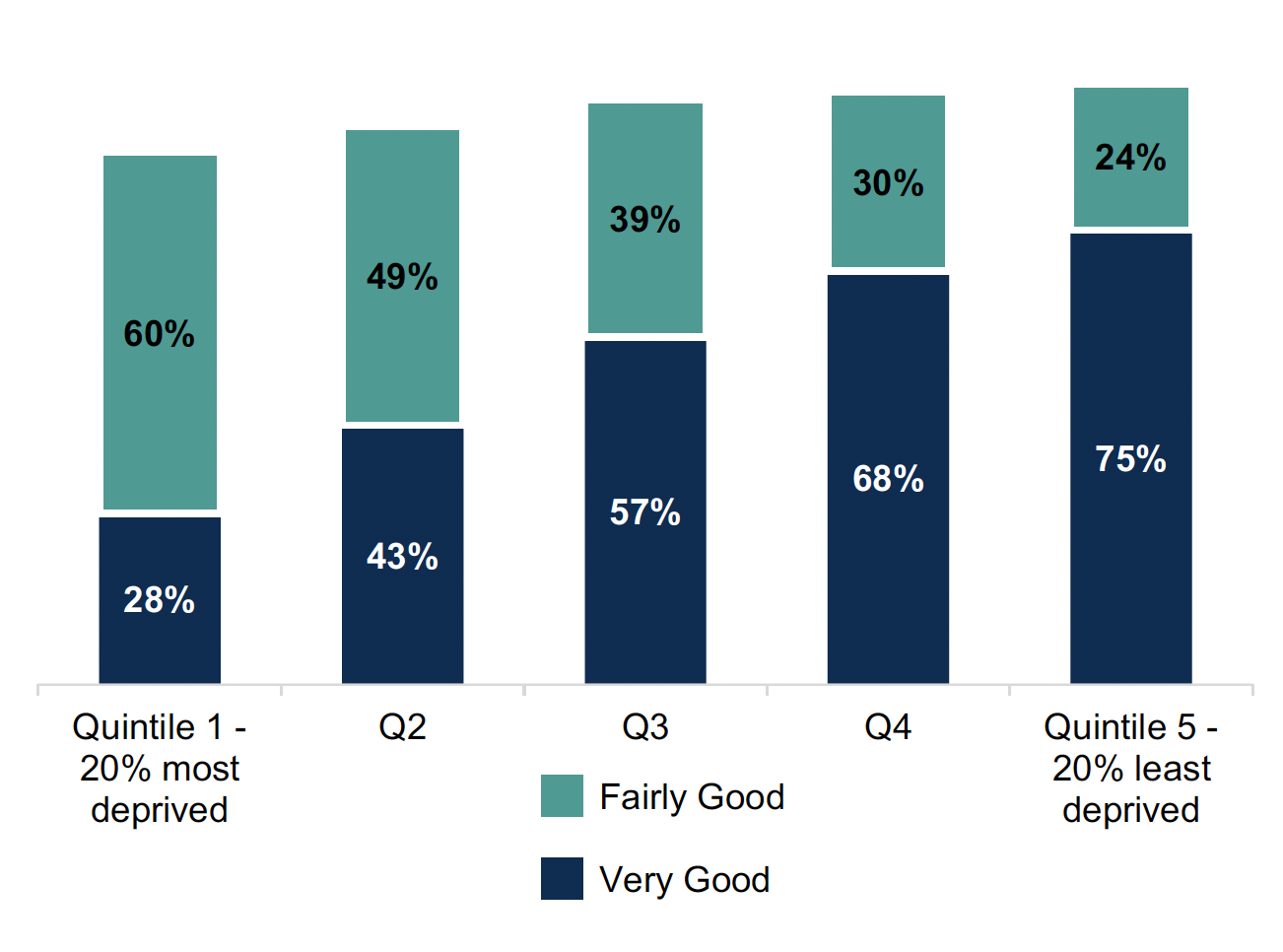Neighbourhoods and communities 2023: Scottish Household Survey findings
This report provides insights into neighbourhoods and communities in Scotland. It draws on key data from the Scottish Household Survey (2023) to explore neighbourhoods and communities both at a national level in Scotland and for different subgroups and different places.
Neighbourhoods
In 2023, over nine in 10 adults (95%) rated their neighbourhood as a ‘very’ or ‘fairly’ good place to live, the same as in 2022 and stable over the past decade (from 2013). Over half of adults in Scotland (55%) rated their neighbourhood as a ‘very good’ place to live (Table 2.1 in the supporting Excel workbook). This has decreased slightly, from 57% in 2022 (see Table 1 in the Communities section of the report).
Across all of Scotland’s Local Authorities the majority of people rate their neighbourhoods as a good place to live. However, there are differences between different Local Authorities. Eight-five percent of those in West Dunbartonshire rated their neighbourhood as a ‘very’ or ‘fairly’ good place to live, rising to 99% of adults in Orkney, Shetland Islands, Aberdeenshire and East Renfrewshire (the Local Authorities with the highest ratings are shaded in dark blue in Figure 1[5]).
Percentage of adults who rate their neighbourhood as a 'very good' and 'fairly good' place to live by Local Authority, 2023, Scotland[6]

Neighbourhood ratings also varied by area deprivation. Adults in the 20% least deprived areas were more likely to rate their neighbourhood as a ‘very good’ place to live than those in the 20% most deprived areas (75% in the least deprived areas, compared to 28% in the most deprived areas) (Table 2.5 in the supporting Excel workbook and Figure 2).
Percentage of adults who rate their neighbourhood as a 'very good' and 'fairly good' place to live by SIMD, 2023, Scotland

Neighbourhood ratings also vary by whether people live in urban or rural settings, and by age, disability and ethnicity (Tables 2.2, 2.7 to 2.10 in the supporting Excel workbook).
Neighbourhood ratings increase with age. In 2023, 41% of 16 to 24 year olds rated their neighbourhood as a ‘very good’ place to live, this rises to two thirds (66%) of those aged 75 and over. In 2023,16 to 24 year olds were less likely than in 2022 to rate their neighbourhood as ‘very good’, falling from 50% in 2022 (a ten percentage point decrease). For adults aged 75 and over neighbourhood ratings have stayed stable.
Those in remote rural areas or accessible rural areas (73% and 71%, respectively) were more likely to describe their neighbourhood as a ‘very good’ place to live, compared to 48% in large urban areas and 52% in other urban areas (Table 2.2 in the supporting Excel workbook).[7]
In 2023, adults in remote small towns were more likely than in 2022 to rate their neighbourhood as a ‘very good’ place to live (increasing from 49% in 2022 to 67% in 2023). This is the only urban-rural classification where there has been improvement in neighbourhood ratings. In large urban and accessible rural areas, the percentage of adults rating their neighbourhood as ‘very good’ has stayed stable. In other urban areas, accessible small towns, and remote rural areas, there have been declines in the percentage of adults who rate their neighbourhoods as ‘very good’.
Contact
Email: socialresearch@gov.scot
There is a problem
Thanks for your feedback